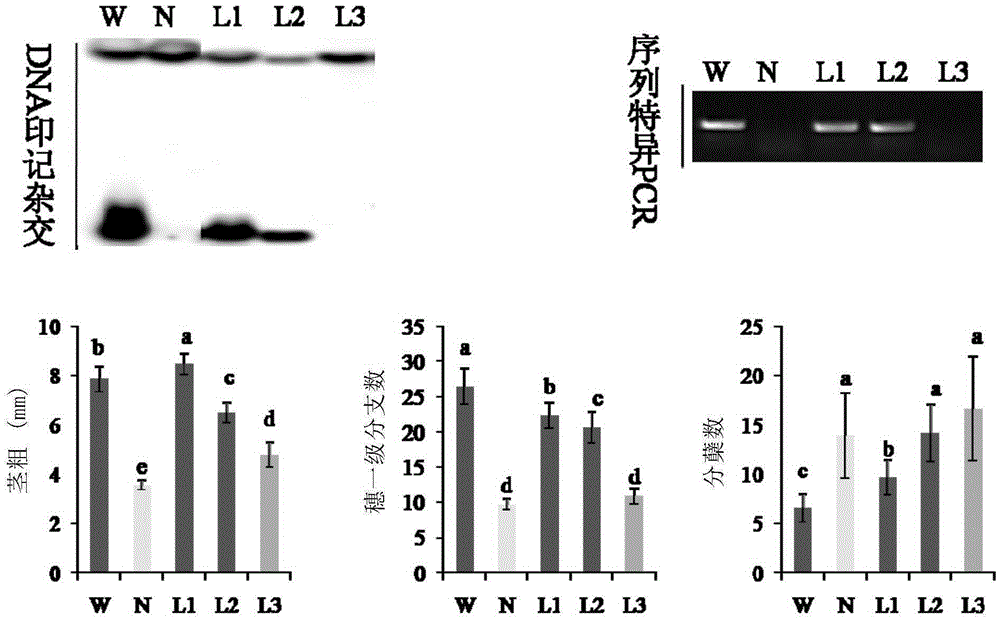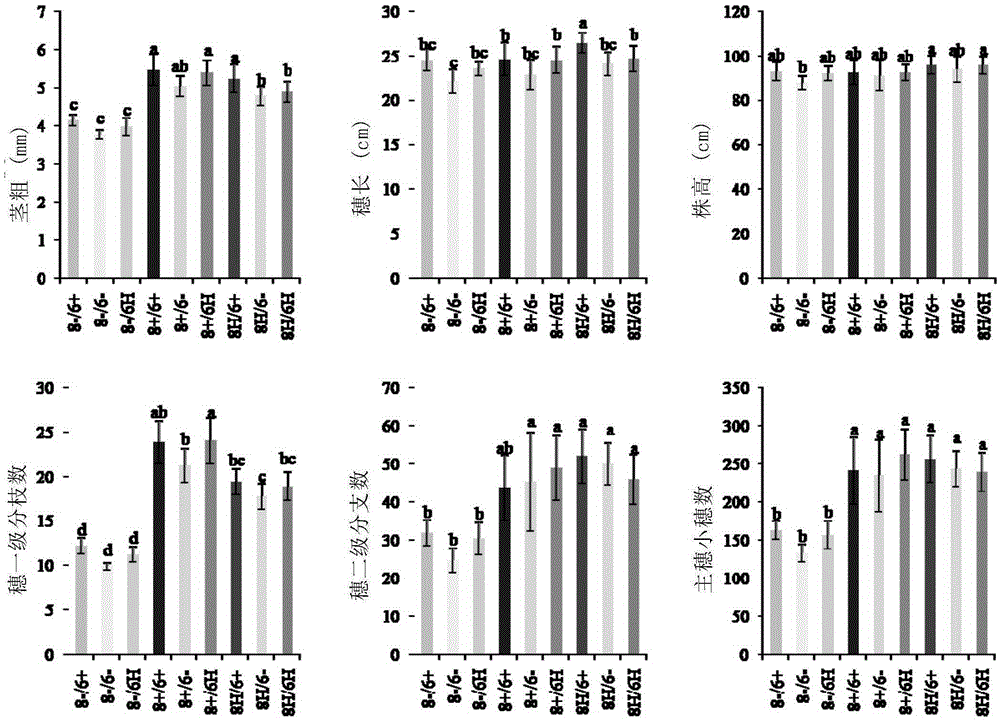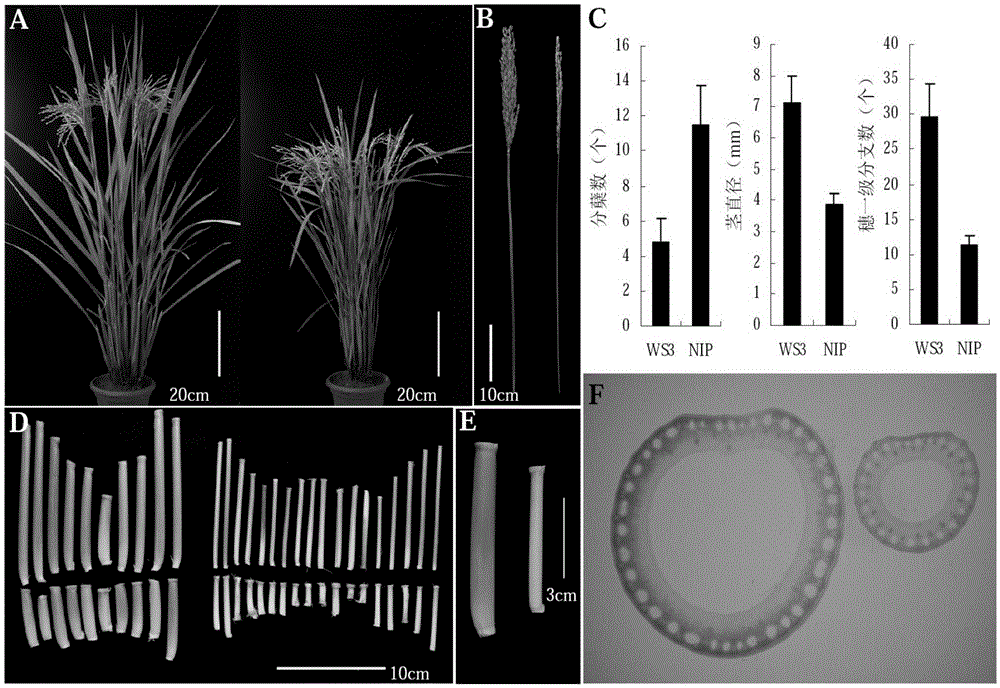Gene for regulating plant types and yield of plants and application of gene
A yield and plant technology, applied in the fields of plant genetic improvement, plant products, and botanical equipment and methods, which can solve problems such as narrow gene pools
- Summary
- Abstract
- Description
- Claims
- Application Information
AI Technical Summary
Problems solved by technology
Method used
Image
Examples
Embodiment 1
[0189] Embodiment 1, new plant type germplasm excavation and main effect gene location
[0190] According to the definition of the new plant type by the International Rice Institute, the inventor has discovered a new type of rice germplasm in the germplasm resources of the Zhejiang area, and named it WS3 ( figure 1 A left). Compared with the control variety Nipponbare (Nip figure 1 A right) Compared with the WS3 stem diameter is about 0.7-0.8cm ( figure 1 C-F), the average number of tillers is 5, and the number of primary branches is as high as 30 ( figure 1 C), the number of spikelets per ear exceeds 300 ( figure 1 B), with typical new plant type characteristics. Therefore, this germplasm was used as the raw material for subsequent gene mining, and was crossed with Nipponbare to construct F2 population for QTL analysis.
[0191] By using 145 polymorphic molecular markers evenly distributed on the 12 chromosomes of rice, the inventor constructed a saturated genetic linkag...
Embodiment 2
[0192] Example 2. Identification of the unique structure of qWS8 and its application
[0193] By designing primers across the localization interval, the inventors amplified the sequence corresponding to WS3 using the genomes of Nipponbare (Nip) and WS3 as amplification templates, but did not find any difference in sequence size. When detecting by hybridization technology, it can be detected that the sequence size of the positioning interval is different, and the WS3 interval is obviously larger than the Nip interval. When XbaI single enzyme digestion and double digestion with other enzymes, combined with the probe of the sequence in the positioning interval, it can be detected These results indicate that WS3 contains a repeat sequence that cannot be detected by conventional PCR, and these repeat sequences are completely consistent ( Figure 5 ).
[0194] By using a special high-fidelity Taq enzyme, the inventors successfully amplified the full-length WS3 region, and subcloned...
Embodiment 3
[0197] Example 3, qWS8 loci affect multiple important agronomic traits
[0198] Through detailed phenotypic analysis of the four key exchanges (R7, R8, R9, R10-B, R10 was backcrossed to form the segregant line R10-B), it was found that qWS8 not only had a significant promoting effect on stem diameter , and can greatly increase the number of first-level branches, while moderately reducing the number of tillers ( Figure 8 , different letters indicate significant differences), these all meet the new plant type standards defined by the international rice, so the inventors believe that qWS8 is an important site for generating new rice plant types.
[0199] In addition, this locus has no obvious promotion effect on plant height or the effect is not large, suggesting that the promotion of this locus on plant height may depend on specific downstream genes, but overall, the negative effect of qWS8 on plant height is not large. In order to further illustrate the contribution of qWS8 t...
PUM
 Login to View More
Login to View More Abstract
Description
Claims
Application Information
 Login to View More
Login to View More - R&D
- Intellectual Property
- Life Sciences
- Materials
- Tech Scout
- Unparalleled Data Quality
- Higher Quality Content
- 60% Fewer Hallucinations
Browse by: Latest US Patents, China's latest patents, Technical Efficacy Thesaurus, Application Domain, Technology Topic, Popular Technical Reports.
© 2025 PatSnap. All rights reserved.Legal|Privacy policy|Modern Slavery Act Transparency Statement|Sitemap|About US| Contact US: help@patsnap.com



